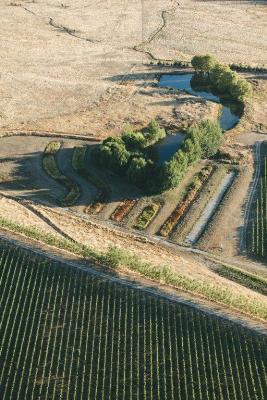
One of Amisfield's cornerstone sustainability projects has been the development of New Zealand's first wetland winery waste water recycling plants, which is testament to our ongoing commitment to sustainable management practices throughout our business.
Wetlands are amazingly efficient and diverse ecosystems that have the ability to stabilise and purify the natural environment. With every winemaking facility there comes the responsibility to manage the resulting waste water which can include residues from the juices and cleaning materials. On average 4L of water for every Litre of wine produced is used in the cleaning process accompanying the winemaking. Ten years ago when Amisfield’s winery was being considered on our rural site the obvious conclusion was to draw on one of natures great filtration processes and construct a purpose built wetland on site.
Constructed wetlands are highly controlled environments that mimic natural processes by careful and controlled water flow through specifically selected aquatic plants. These aquatic plants are biofilters in that they have the ability to filter out all toxins through their stems, roots and leaves. Within our system we predominately use the sedge-Jointed twig rush (Baumea articulata) as well as the native Raupo (Typha orientalis).
Waste water from our winery is pumped up to two holding tanks which then slowly flows down an aerator into the wetland. By controlling the flow and retention time of the water through the wetland with the construction of separate flow cells we are allowing time for the plants to clean and purify the water. This now clean and clear water may be reused in the irrigation of our shelter belt above the winery and for watering the wild flowers on the embankment.
Frogs have also found a home in the wetlands and are great environmental indicators as their presence confirms that the water is pure, clean and suitable for re-use in the vineyard.




